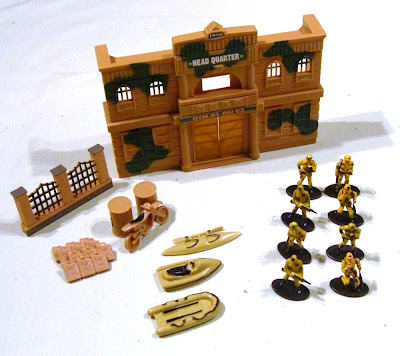One of my wife's hobbies is genealogy. So far she has traced her direct ancestors all the way back to the early eighteenth century, when one of them was born in Edinburgh. He is described in the records as being the son of a member of the Edinburgh City Guard (an armed quasi-police force) who was an in-dweller of the Castle. He later joined the British Army, and after serving as a infantry soldier in a number of regiments raised by successive Dukes of Argyll, he ended his service as an Invalid and Master Gunner at Landguard Fort near Harwich. When he was 'too old and decrepit for further service' at the age of ninety(!) he moved to the Royal Hospital, Chelsea, where he remained until he died.
During his service he spent some years in Gibraltar, and whilst he was there he fathered several children, one of whom joined the Royal Regiment of Artillery as a twelve year-old fifer. It was this son who was the first of my wife's family to come to Woolwich, and the family are still here nearly two hundred and fifty years later. (The boy later became Fife-Major to the Company of Gentlemen Cadets, one of the senior NCOs in the Regiment.)
One of the things that my wife had done as part of her research was a Hereditary DNA test. This looks for markers in an individual's DNA and gives an indication of the origins of one's forebears. Because the Y-Chromosome (Y-DNA) passes down from father to son with very little variation, it can be used to trace the origins of your paternal line. In my wife's case the Y-DNA indicated that her father's family came from the Argyll area of Scotland.
My wife prevailed upon me to also have the test ... and it produced an interesting result. My surname is Norman French in origin, and I expected that the results of the Y-DNA would show the necessary genetic markers to support the contention that my paternal line came from Northern France.
It did not. In fact what it did show was that I belonged to a particular haplogroup whose geographical origins can be found in the area known as Frisia or Friesland. This part of the North Sea coast of Europe stretches from the northern part of the Netherlands to the southern part of the Jutland peninsular.
So it would appear that I am not a full-blood Norman after all ... but it is highly likely that I am a Saxon!
During his service he spent some years in Gibraltar, and whilst he was there he fathered several children, one of whom joined the Royal Regiment of Artillery as a twelve year-old fifer. It was this son who was the first of my wife's family to come to Woolwich, and the family are still here nearly two hundred and fifty years later. (The boy later became Fife-Major to the Company of Gentlemen Cadets, one of the senior NCOs in the Regiment.)
One of the things that my wife had done as part of her research was a Hereditary DNA test. This looks for markers in an individual's DNA and gives an indication of the origins of one's forebears. Because the Y-Chromosome (Y-DNA) passes down from father to son with very little variation, it can be used to trace the origins of your paternal line. In my wife's case the Y-DNA indicated that her father's family came from the Argyll area of Scotland.
My wife prevailed upon me to also have the test ... and it produced an interesting result. My surname is Norman French in origin, and I expected that the results of the Y-DNA would show the necessary genetic markers to support the contention that my paternal line came from Northern France.
It did not. In fact what it did show was that I belonged to a particular haplogroup whose geographical origins can be found in the area known as Frisia or Friesland. This part of the North Sea coast of Europe stretches from the northern part of the Netherlands to the southern part of the Jutland peninsular.
So it would appear that I am not a full-blood Norman after all ... but it is highly likely that I am a Saxon!


































































